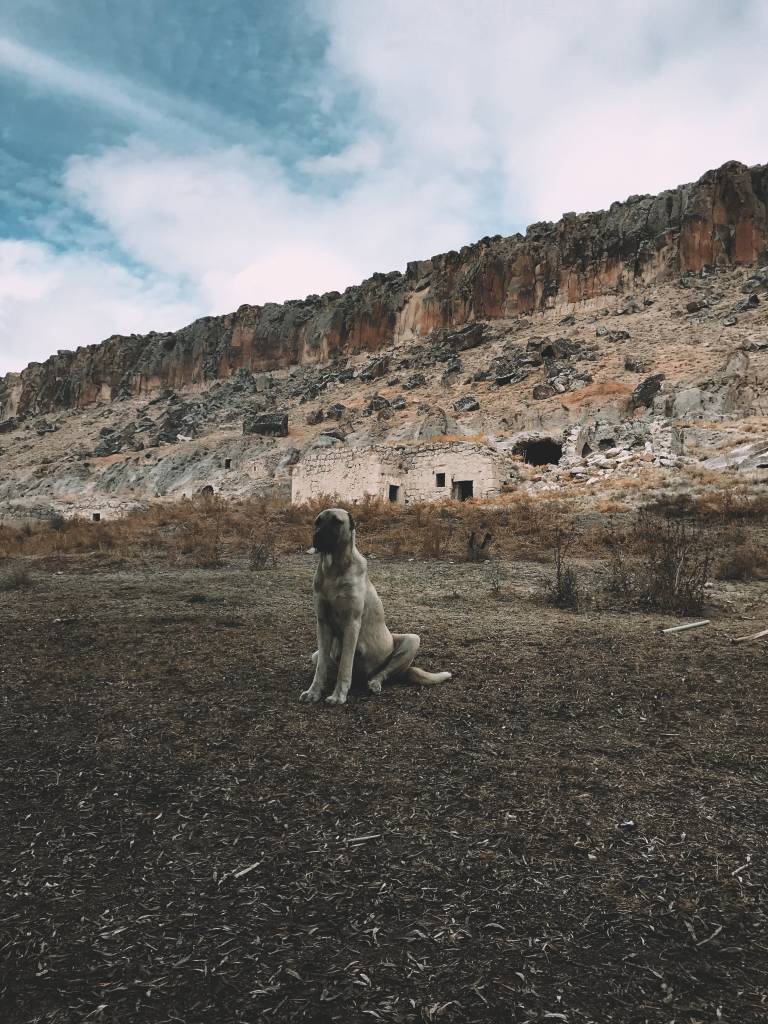How Much Water Should A Dog Drink A Day?
Post Date:
December 10, 2024
(Date Last Modified: November 13, 2025)
Hydration is an important aspect of everyday dog care and management.
Why Water Matters for Dogs
Water supports temperature regulation, nutrient transport, waste removal, and joint lubrication in dogs.
Adult dogs are composed of approximately 60% water by body weight, with puppies commonly higher and older dogs often lower in total body water [1].
Clinical estimates classify dehydration by percent body-weight loss, with about 5% representing mild dehydration, 8% moderate, and 10–12% severe, and these categories correspond to escalating clinical signs and physiological compromise [1].
Even modest short-term underhydration can impair thermoregulation and exercise tolerance in dogs, while prolonged fluid deficits can progress to prerenal azotemia and organ dysfunction when not corrected [1].
Daily Intake Guidelines by Weight
Clear rules of thumb let owners estimate a baseline daily fluid volume, but recommendations vary by source and method of calculation.
A commonly used clinical maintenance guideline is about 50–60 mL per kilogram per day for adult dogs as a starting point for most healthy animals [2].
Another frequently quoted household rule is roughly 1 ounce of water per pound of body weight per day (1 oz/lb/day), which equals about 65 mL/kg/day and gives quick, owner-friendly estimates [2].
| Weight (lb) | Approx oz/day | Approx cups/day | Approx mL/day |
|---|---|---|---|
| 10 lb (4.5 kg) | 10 oz | 1.25 cups | ~300 mL |
| 25 lb (11.3 kg) | 25 oz | 3.1 cups | ~740 mL |
| 50 lb (22.7 kg) | 50 oz | 6.25 cups | ~1,480 mL |
| 80 lb (36.3 kg) | 80 oz | 10 cups | ~2,360 mL |
Use these table estimates as a quick baseline; the 1 oz per pound rule is a practical shortcut but may overestimate or underestimate needs for some dogs compared with kg-based clinical formulas [2].
When precise assessment is required (sick dogs, hospitalized animals, or patients receiving fluids), clinicians commonly calculate maintenance fluids in mL/kg/day and adjust based on ongoing losses and clinical response [2].
Factors That Increase or Decrease Water Needs
Activity, environment, diet, and medical status are the major variables that make a single rule insufficient.
Exercise and hot ambient temperatures commonly raise fluid requirements substantially; physically active dogs or those in hot, humid climates may drink one to two times the baseline maintenance figure during and after exertion [3].
Diet type strongly affects free-water requirements because dry kibble typically contains around 6–10% moisture while canned/wet diets generally contain 70–82% moisture, so dogs fed primarily canned food will obtain a large fraction of daily water from food and usually drink less free water [4].
Physiologic states and health conditions also change needs: pregnant and lactating bitches have markedly increased demands, some endocrine disorders cause excessive thirst, and fever or gastrointestinal losses increase ongoing fluid requirements [3].
Monitoring Hydration: Signs and Simple Tests
Owners can detect inadequate or excessive hydration early with routine observation and a few simple checks.
Clinical signs of dehydration include tacky or dry mucous membranes, prolonged skin-tent time, sunken eyes, and lethargy; skin-tent assessment corresponds to percent dehydration, with a loose return indicating mild loss and markedly delayed return suggesting moderate to severe dehydration [5].
Urine color and frequency are practical at-home indicators: concentrated, dark urine and reduced frequency suggest lower intake or fluid loss, while consistently pale urine and very frequent voiding may suggest excess intake or an underlying condition and merit evaluation [5].
Quantitative thresholds used in clinical practice define polyuria/polydipsia as water intake often exceeding about 100 mL/kg/day, which should prompt veterinary assessment for causes such as diabetes or renal disease [6].
Wet Food, Treats and Water Contribution
Non-water sources can supply a substantial portion of total daily fluid intake and should be counted when estimating needs.
Because canned diets can contain 70–82% moisture, a dog eating 1,000 grams of a 75% moisture canned food will ingest roughly 750 mL of water from the diet alone, which reduces the amount of free water the dog needs to drink [4].
Hydrating treats such as low-sodium broth, fruits like seedless watermelon, or plain yogurt add water volume but high-sodium treats or broths can increase thirst and should be used cautiously; commercially prepared high-sodium snacks may drive additional drinking and electrolyte shifts [4].
Adjust drinking targets downward when a dog consumes large amounts of wet food or water-rich treats, and upward when dry food comprises most of the diet [2].
Special Populations: Puppies, Seniors, Pregnant and Nursing Dogs
Life stage alters both demand and monitoring needs, so tailored guidance is important for vulnerable groups.
Puppies generally have a higher total body water percentage and proportionally greater maintenance needs per kg than adult dogs and may require more frequent access to water for thermoregulation and growth support [1].
Lactating bitches commonly require several times their baseline maintenance intake; clinicians often expect two to four times maintenance volume during peak lactation and advise free access to water to meet milk production demands [3].
Senior dogs may have decreased thirst perception or concurrent conditions (renal disease, heart disease) that require individualized monitoring and adjustments by a veterinarian [5].
Illnesses That Affect Water Intake and Hydration Status
Several common diseases and medications change drinking behavior or fluid requirements and should trigger veterinary evaluation when new or severe.
Diseases that increase thirst include diabetes mellitus and hyperadrenocorticism (Cushing’s disease), both of which frequently present with excessive drinking and urination as prominent signs [6].
Conditions that cause fluid loss — such as vomiting, diarrhea, or severe panting — increase ongoing losses and may require oral rehydration or parenteral fluids depending on severity and clinical signs [1].
Certain medications (diuretics, corticosteroids) and electrolyte disturbances change thirst or retention patterns; any rapid change in drinking should prompt a veterinary history and diagnostic workup including basic blood and urine testing [6].
Overhydration and Water Intoxication: Risks and Response
Excessive intake is uncommon but can cause life-threatening electrolyte disturbances and require prompt care.
Water intoxication can produce dilutional hyponatremia; serum sodium concentrations <130 mEq/L are generally considered severe and may lead to neurologic signs from cerebral edema if the decline is rapid [6].
Typical causes include forced drinking, very rapid intake after heavy exercise, or water-play scenarios where dogs swallow large volumes quickly; clinical signs can include vomiting, ataxia, seizures, and decreased consciousness [6].
Immediate actions for suspected water intoxication include withholding additional water and seeking emergency veterinary care — do not attempt to correct serum sodium at home because inappropriate correction can worsen neurologic injury [1].
Practical Strategies to Encourage Healthy Drinking Habits
Small changes in routine and environment often improve daily intake and make monitoring simpler for owners.
- Keep multiple clean water bowls available and change water at least once daily to encourage drinking, with more frequent changes in warm weather [5].
- Measure and record a dog’s intake for a few days to establish a baseline; owners can use a marked container to track ounces or cups consumed and share the record with their veterinarian if concerns arise [2].
- Use palatable, low-sodium broths or water fountains for picky drinkers and increase wet-food proportion if appropriate to reduce reliance on free water intake [4].
When in doubt about appropriate targets for an individual dog — for example, a dog with chronic disease, marked changes in drinking, or pregnancy/lactation — consult a veterinarian for tailored assessment and, if needed, laboratory testing [6].
Sources
- merckvetmanual.com — general veterinary medicine and fluid therapy reference.
- avma.org — clinical guidelines and owner-facing recommendations.
- wsava.org — global small animal veterinary association guidance on nutrition and care.
- vca.com — clinical pet health resources on diet moisture and hydration.
- aaha.org — American Animal Hospital Association care and monitoring recommendations.
- ncbi.nlm.nih.gov — peer-reviewed clinical literature on polydipsia, hyponatremia, and disease causes.






